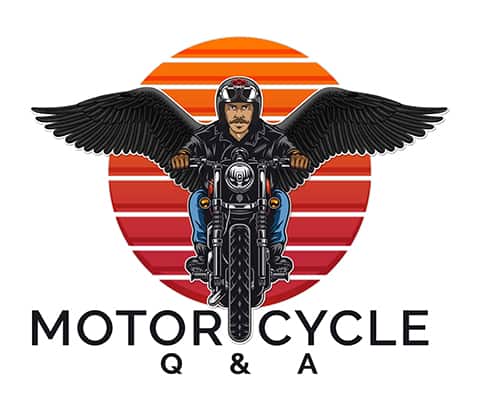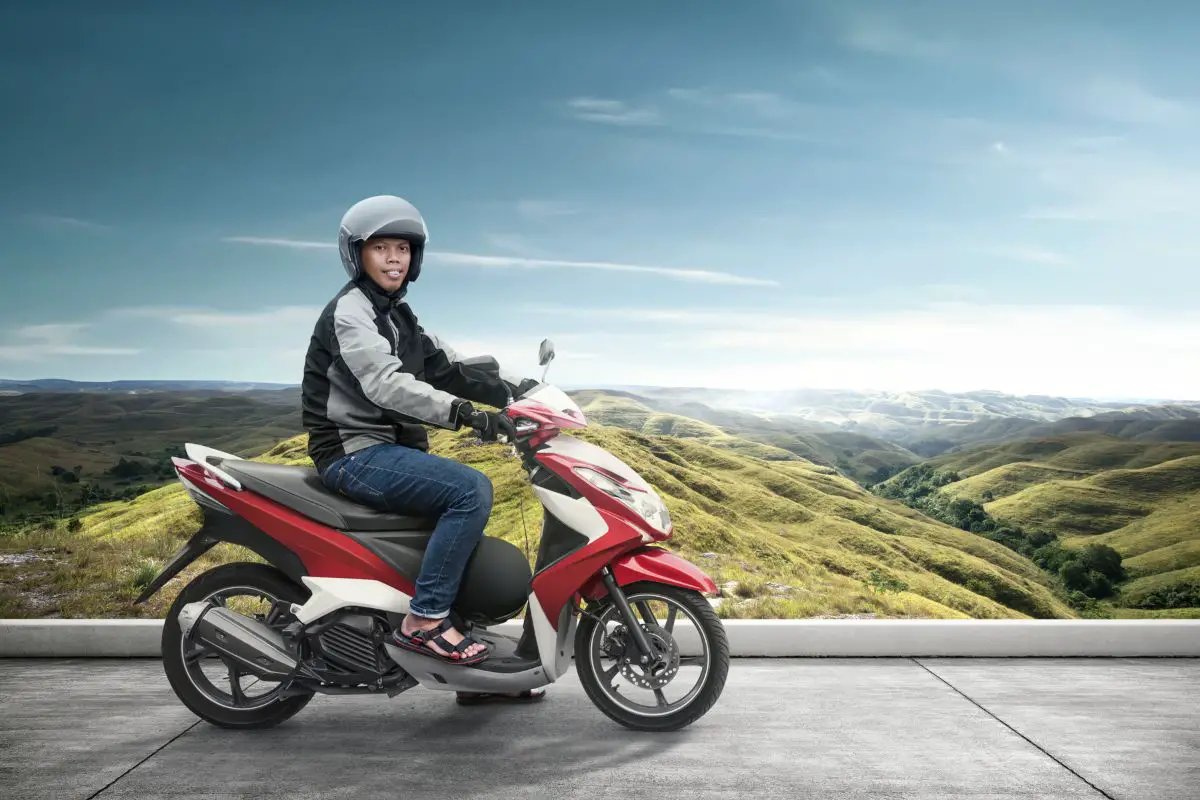Motorcycle helmets are one of the primary pieces of safety gear for any bike rider and often one of the pieces of gear that get the least amount of thought when it comes to maintenance and replacement considerations.
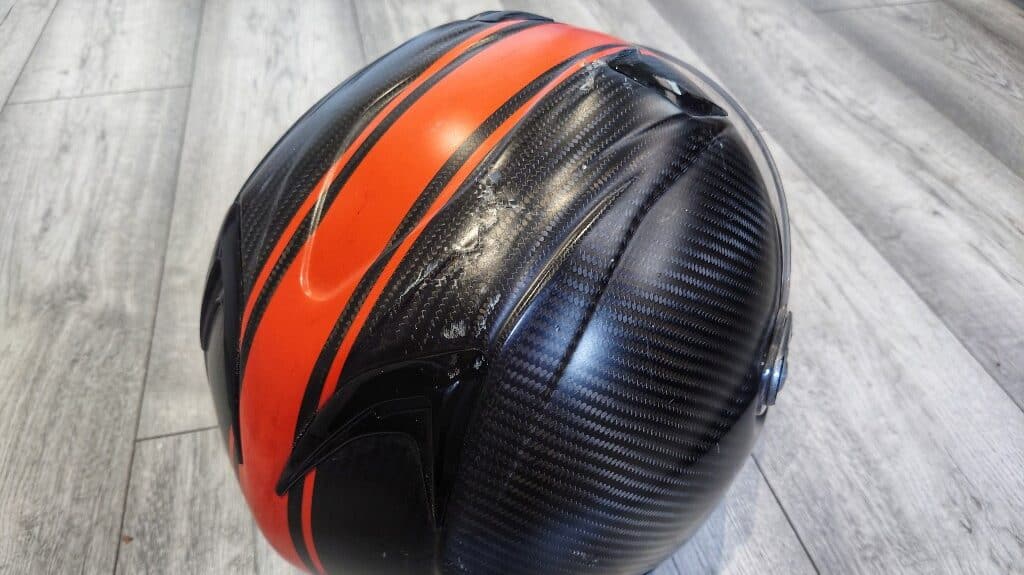
So, when should you replace a motorcycle helmet?
The recommended replacement of a motorcycle helmet is every five years, regardless of wear and tear. It should also be replaced if exposed to excessive UV, sustained a significant impact, the inner has separated from the outer shell, it no longer fits snugly, been exposed to a solvent, or has been in an accident.
Because your helmet is such a crucial part of your safety gear when riding a motorcycle, it deserves to be maintained and given sufficient care. Importantly, you also need to know when it is time to replace your helmet with a new one.
A few recommended circumstances may require you to replace your helmet even before it gets old and worn out.
Do Motorcycle Helmets Expire?
Motorcycle helmets do not have a specific expiry date, but most helmet manufacturers recommend that the helmet is replaced every 5 to 7-years. If you wear your helmet every day, you may need to consider replacing your helmet before this time.
A helmet should be considered for replacement after this time because the resins, plastics, and adhesives used in the manufacture of the helmet degrade over time. Motorcycle helmets are also affected by UV exposure and begin to deteriorate with exposure to this radiation that is all around us.
If you do not use your helmet daily, and it is stored away from direct sunlight, you may get your helmet to last the full 5 to 7 years.
You can check out my best-recommended motorcycle helmet by clicking the link HERE
All motorcycle helmets will come with a lifespan recommendation from the manufacturer, so make sure you read all the information which comes with your new motorcycle helmet. Hence, you are fully aware of any particular points the manufacturer wants a new owner to be mindful of regarding your new purchase.
Since a motorcycle helmet is a proven life-saving device in an accident, it is worthwhile following the manufacturer’s recommendations in this regard. In fact, I would say it is imperative.
When Should You Replace a Motorcycle Helmet?
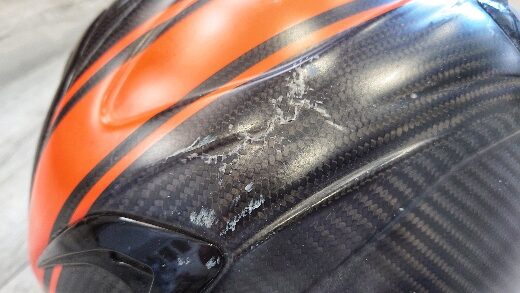
If your helmet has not reached the age when it should be retired and replaced as outlined by the manufacturer, what other conditions or situations would warrant considering a replacement helmet?
Here’s the answer:
- After prolonged exposure to direct sunlight
- After Dropping the helmet onto a hard surface
- The inner liner separates from the outer shell
- The padding inside becomes loose or frayed
- The helmet no longer fits correctly
- The clasp is compromised
- Exposure to a solvent
- The helmet has been in an accident
- After exposure to direct sunlight: Prolonged exposure of a helmet to direct sunlight can result in the degradation of the composite elements of the helmet. They are sensitive to UV exposure, and prolonged exposure can result in the integrity of the materials being compromised. So a motorcycle helmet mustn’t be left in a location where it will be exposed to sunlight for an extended time.
- After dropping a helmet: In some cases, if you were to drop your helmet, the impact may not be significant enough to warrant the replacement of the helmet. If, on the other hand, your drop it and it bounces down a flight of stairs or is dropped onto a hard surface such as concrete, it is recommended that the helmet be replaced. Dropping the helmet from a significant height onto a hard surface could damage the structural integrity with micro-fractures, which may cause the helmet to fail and not provide sufficient protection in the event of an accident.
- The inner liner separates from the outer shell. This can result from repeated use or simply due to the age of the helmet. The adhesives used to securely fix the inner liner to the surface of the helmet deteriorate over time.
- The padding inside becomes loose or frayed. Regular use of the helmet and repeatedly putting the helmet on and removing it takes its toll on the inner comfort padding. This can start to affect the fit of the helmet on your head. The wear will cause the helmet to become loose, and once this starts to happen, the helmet should replace.
- The helmet no longer fits correctly. Over time the inner lining and the foam comfort lining can compress with the repeated wearing of a motorcycle helmet. The compression of the linings can lead to the helmet having a looser fit on your head. This is not a healthy situation since your head will bounce around inside the helmet in the event of an impact, and it can cause you injury. If the helmet no longer fits correctly, it should be replaced. You can read my article on how to fit a helmet correctly by clicking HERE.
- The clasp is compromised. The securing clasp on the chinstrap is one of the helmet components that sees much wear and tear during the life of the helmet. If the clasp has sufficient wear and it is no longer reliably holding the chin strap in place, then it is time to replace the helmet. This strap is a vitally important part of a motorcycle helmet keeping the helmet secured on your head during a motorcycle accident. The clasp and strap should be regularly checked to ensure its condition is excellent every time the helmet is worn.
- Exposure to a solvent. If your helmet has been exposed to a solvent or a solvent gas, it could start to break down the plastic and resins used to manufacture the helmet. You may not see this damage visually on the helmet’s outer shell, but the damage could still be there. Included in the list of solvents is the fuel that you put in your bike. Gasoline can damage your helmet, so keep it away from the tank when you are refueling.
- The helmet has been in an accident. A motorcycle helmet that has been involved in an accident should be replaced immediately and should never be used again. The g-forces involved in an accident can compromise the integrity of the inner lining, the chin strap, and other components of the helmet. No matter how slight you think it may be, any accident impact should be cause enough to replace your helmet. Scratches on the helmet from sliding across the asphalt also compromise the integrity of the outer shell and will require the helmet to be replaced.
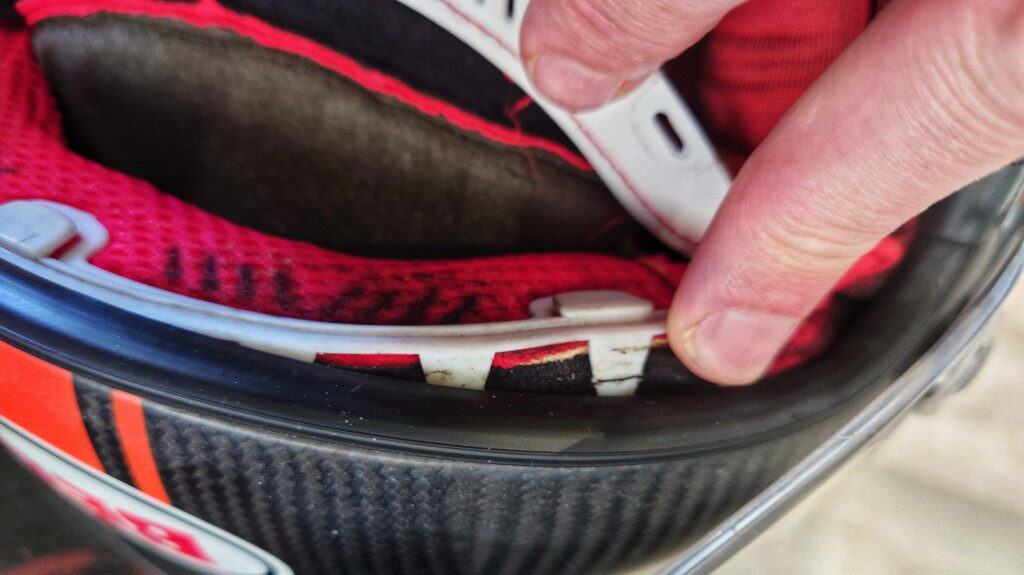
A motorcycle helmet is designed to take an impact and protect the rider’s head from injury. Some helmets are designed with crumple zones to distribute the shock and absorb the energy of the impact without allowing much of it to pass through to the rider’s head.
A helmet’s construction can be compromised in certain situations or events that would damage the helmet and require a replacement.
When Is It Not Necessary To Replace Your Helmet
While there is no harm in being paranoid about taking good care of your helmet, motorcycle helmets are built to be robust and tough.
They can withstand the daily use and bumps and knocks associated with everyday helmet use without suffering any adverse effects to their structural integrity or compromising their effectiveness to protect you in an accident.
You do, however, need to exercise a certain amount of caution and rather err on the side of safety with your helmet. But there are certain events during the normal use of a helmet that you do not need to be overly concerned about.
Your helmet is bound to sustain some scrapes and scratches, which may well damage some of the cometic, decorative aspects of the helmet. As long as these scratches are not too deep, they will not compromise the helmet to the point of needing a replacement.
The occasional dropping of the helmet from your hand or from the bike to the ground will probably not offer enough impact to damage the helmet unless it lands on a sharp corner such as the 90-degree edge of a sidewalk or similar structure. So, a few drops of your helmet normally is not a cause for concern that should cause you to consider a replacement.
The wearing off of decals and stickers is also not normally a cause for concern if they are wearing off from use. The only time it would be a cause to consider is if they are peeling off because of exposure to excessive heat, such as being close to the exhaust pipe, or exposure to a solvent such as gasoline.
Conclusion
You should take care of your helmet with as much care, if not more, than what you give your motorcycle. A helmet is like a seatbelt in your car. It may seem like an inconvenience, but you will be glad it is there when you need it.
Because the condition of your helmet could save your life or prevent serious or debilitating injury, it pays to get the best helmet you can afford and take care of it as best you can. It is also wise to follow the manufacturer’s recommendation or to replace it every 5-years.
Replacing a motorcycle helmet will also benefit from getting a helmet that uses newer, more effective technology built into it, which may not have been available when you purchased your old helmet!
Happy Riding!
References
